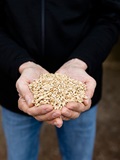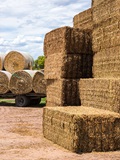South East SA
20 May 2020
| Date | SE 23 | SE 22 | SE 5YA |
|---|---|---|---|
| 06-Jan-23 | 358 | 210 | 226 |
| 13-Jan-23 | 363 | 210 | 231 |
| 20-Jan-23 | 363 | 210 | 226 |
| 27-Jan-23 | 363 | 210 | 231 |
| 03-Feb-23 | 363 | 210 | 230 |
| 10-Feb-23 | 363 | 210 | 228 |
| 17-Feb-23 | 363 | 210 | 228 |
| 24-Feb-23 | 363 | 210 | 228 |
| 03-Mar-23 | 363 | 210 | 228 |
| 10-Mar-23 | 363 | 210 | 227 |
| 17-Mar-23 | 363 | 215 | 229 |
| 24-Mar-23 | 363 | 215 | 229 |
| 31-Mar-23 | 363 | 215 | 232 |
| 07-Apr-23 | 363 | 215 | 232 |
| 14-Apr-23 | 363 | 218 | 233 |
| 21-Apr-23 | 363 | 220 | 232 |
| 28-Apr-23 | 363 | 220 | 237 |
| 05-May-23 | 363 | 220 | 237 |
| 12-May-23 | 363 | 220 | 237 |
| 19-May-23 | 363 | 220 | 237 |
| 26-May-23 | 363 | 220 | 237 |
| 02-Jun-23 | 363 | 220 | 237 |
| 09-Jun-23 | 353 | 230 | 260 |
| 16-Jun-23 | 351 | 240 | 282 |
| 23-Jun-23 | 348 | 240 | 279 |
| 30-Jun-23 | 343 | 240 | 279 |
| 07-Jul-23 | 338 | 240 | 271 |
| 14-Jul-23 | 331 | 243 | 272 |
| 21-Jul-23 | 323 | 245 | 272 |
| 28-Jul-23 | 313 | 245 | 272 |
| 04-Aug-23 | 313 | 245 | 272 |
| 11-Aug-23 | 313 | 245 | 273 |
| 18-Aug-23 | 311 | 253 | 296 |
| 25-Aug-23 | 308 | 260 | 297 |
| 01-Sep-23 | 308 | 260 | 297 |
| 08-Sep-23 | 260 | 297 | |
| 15-Sep-23 | 260 | 297 | |
| 22-Sep-23 | 258 | 295 | |
| 29-Sep-23 | 255 | 292 | |
| 06-Oct-23 | 255 | 292 | |
| 13-Oct-23 | 255 | 258 | |
| 20-Oct-23 | 260 | 258 | |
| 27-Oct-23 | 260 | 257 | |
| 03-Nov-23 | 293 | 264 | |
| 10-Nov-23 | 325 | 270 | |
| 17-Nov-23 | 325 | 265 | |
| 24-Nov-23 | 338 | 269 | |
| 01-Dec-23 | 338 | 271 | |
| 08-Dec-23 | 338 | 264 | |
| 15-Dec-23 | 343 | 265 | |
| 22-Dec-23 | 343 | 265 | |
| 29-Dec-23 | 353 | 271 |
Notes:
Change in price is the change since the last report. Hay quoted is sourced and delivered locally, GST exclusive unless stated otherwise. It should be noted that local prices quoted may not be the cheapest available, sourcing it from another region may be more affordable, and buyers are encouraged to evaluate all options. Prices are indicative to a mid-range shedded product, and based on the best indication of market value at the time of reporting. It should be noted there is a wide variation in quality of hay, prices for a mid-range product will not reflect the weighted average of trade. Prices will naturally vary based on the product quantity and quality, buyer/seller relationship and the size of the trade.The hay report has been commissioned by Dairy Australia to provide an independent and timely assessment of hay markets in each dairy region. This report is created using data provided by the Australian Fodder Industry Association (AFIA). It should be remembered that actual prices may vary for quality or other reasons. Whilst all reasonable steps have been taken to ensure the accuracy of the information contained in this report, Dairy Australia disclaims all liability to the fullest extent permitted by Australian law for any inadvertent errors and for any losses or damages stemming from reliance upon its content. Dairy Australia recommends all persons seek independent advice and, where appropriate, advice from a qualified advisor before making any decisions about changes to business strategy.
Commentary
- Very low rainfall across the coastal parts of the region this week, with falls of less than 5mm of rain. Most of the region saw no rainfall with dry clear days.
- Grass continues to grow well in the region, with a string of drier sunnier days boosting growth after a period of rainfall. These pastures continue to provide good feed opportunities to herds in the region.
- With the run of drier days this week, some additional grass silage cutting was undertaken. As previously indicated for these early cuts most of this is being kept for use on-farm or delivered direct to local dairy farms for ensilage.
- Comments suggest that the optimism for a good harvest for both fodder and grain crops is lifting again, with a good run of weather and overall favourable conditions.
- Dedicated hay producers in the region aren’t expecting a great deal of local trade but dry conditions in NSW and Queensland are keeping hay moving.
- Enquiries remain high, but the good green feed availability and reasonable on-farm supplies mean most of the demand is coming from outside the local area. Shipments continue to move up to drier areas in NSW and Queensland, and export markets are still taking a share. Some reports of straw and hay moving across the border into the wetter parts of south west Victoria.
- Some change to prices this week.
- Cereal hay: +/-0 ($290 to $325/t). Prices remain steady this week.
- Lucerne hay: +/-0 ($340 to $380/t). Prices remain steady this week.
- Straw: +/-0 ($95 to $130/t). Prices remain steady this week.
- Pasture hay: +3 ($290 to $325/t). Prices increase this week.
- Please note: Unless stated otherwise, prices are per tonne, sourced and delivered locally. The price range indicated is for feeds of varying quality with the price range generally indicative of quality of feed. We recommend feed testing and viewing of fodder before purchase to be sure of the quality of feed.

